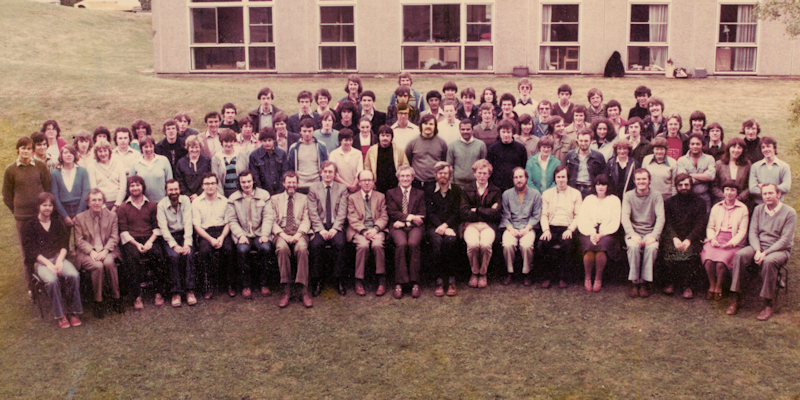
Bill Freeman's History of the Department
Foreword by Professor Ian C Pyle, Founding Professor of Computer Science
When the University of York was being planned, the visionary founders had no thought of computing. Computers had been invented at Manchester and Cambridge Universities, but they were then mainly used in commerce and industry, not in education. Computers were large and expensive: no more relevant than slide-rules or lawnmowers.
But Government and Industrial research institutions found them useful, and the Flowers Report (1965) advised that all universities should have them, with centrally organised procurement and advice for good use. Thus the Computer Board for Universities and Research Councils arranged for York to have a computer, and staff to run it, providing computing power for the whole university, research and administration.
In 1972, the University realised that this was more than hot-water supply, and decided to create a new chair. Initially this was for “Computational Science” (later mocked as “doing difficult sums”) but unwittingly opened the door for a new subject: Computer Science.
In this, information is recognised as the central commodity, with rules articulating what can be done with it (science) and methods of applying this understanding for practical benefit (engineering). Computers are the devices that interpret information, using it to store, transform, communicate and process information. With advances in Solid-state Physics and Electronics, what had previously needed an air-conditioned room can now be carried in your pocket. A modern “smart-phone” has more computing power than a million-pound computer of the 1970s.
During this period, there was an explosion in information technology, particularly with the government describing 1982 as Information Technology Year (Lord Kenneth Baker) and the Alvey Programme 1983- 1987, and the introduction of the World-Wide Web in 1989. Social media have brought the power of computers to communicate demotically, opening up unexpected kinds of mis-use and immorality.
Now, anything made that moves or has moving parts is likely to include computers for control and communication.
At the same time, there have been significant developments in understanding the underlying principles, I.e. in Computer Science, particularly
- Correctness of programs
- Safe behaviour of computer-controlled machines
- Communication protocols
- Human computer interaction
- Robotics
- Addressing problems without any known algorithm
Here Bill Freeman gives an insider’s insights into the growth of the department from scratch (as an adjunct of the computing service), the struggle to bring this subject into fruition, and how the department grew to become a thriving independent academic unit, respected both nationally and internationally.